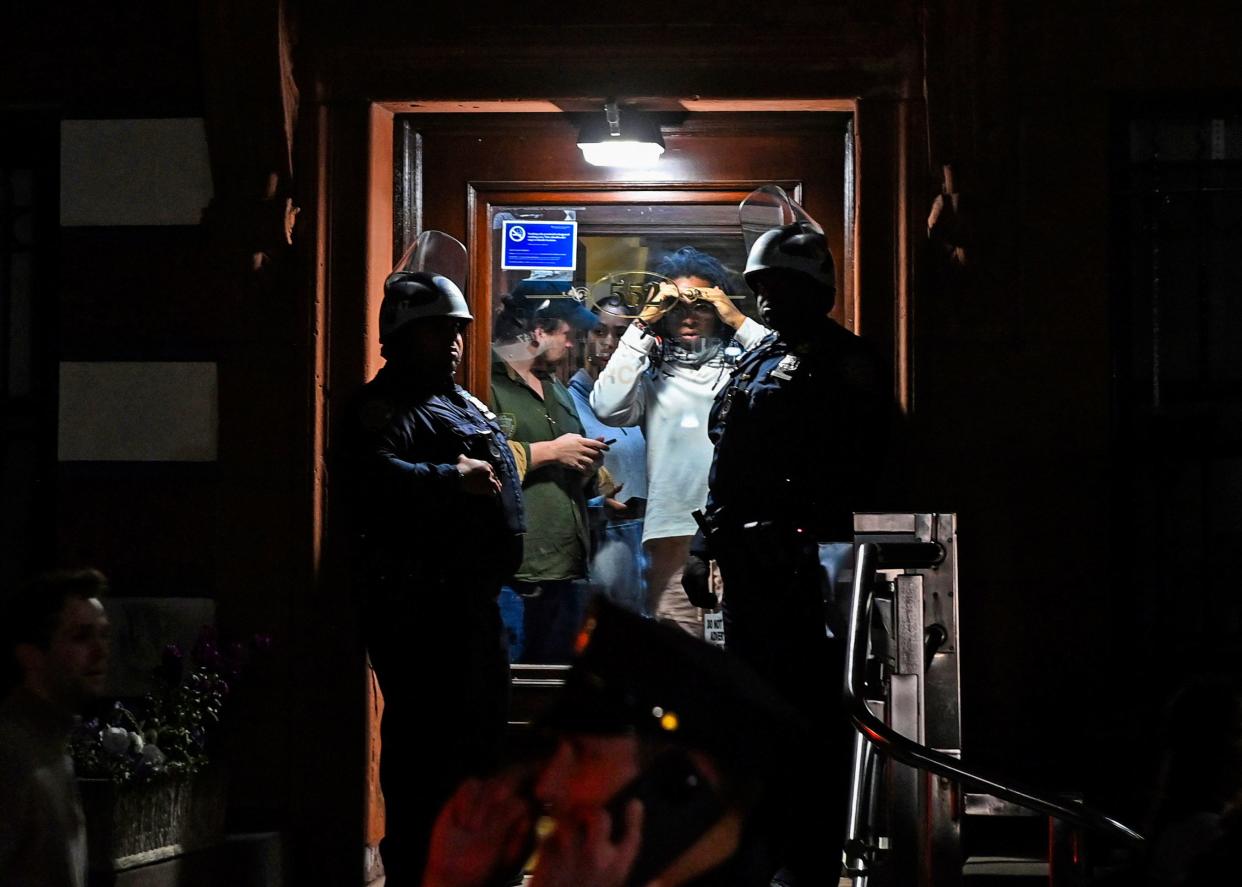Columbia's student radio station was the main source of information for the protests. Here's why that matters.

On Tuesday night, the NYPD entered Columbia University to break up ongoing protests.
Other press couldn't go on campus, so the student radio station was the only source of on-the-ground reporting.
Tens of thousands of people tuned into WKCR's radio broadcast for breaking news.
On Tuesday night, as the police entered the Columbia University campus and arrested 300 protesters, I did something I don't usually do to get breaking news: I turned off the TV, I closed X, and I turned on the radio.
WKCR 89.9 FM, Columbia's student radio station, was broadcasting live from inside the campus about what was happening as the NYPD arrived.
Outside news outlets weren't allowed onto campus, which is gated. So that meant Columbia's own student journalists were the only on-the-ground reporters.
The Columbia Daily Spectator, the student newspaper, has been doing an admirable job reporting on an ongoing event that has attracted major national attention. But on Tuesday night, the nature of the breaking news event as the NYPD marched past the campus gates around 9:30 p.m. meant that it was the radio station's turn to shine.
The radio broadcast was anchored by a young woman who deftly tossed to reporters in the field and the studio. Under such extreme circumstances, it was a highly professional affair — and the reporters were careful with their words and facts. But there were also moments when the field reporters sounded scared, and you could hear a lot of commotion in the background.
Here's a recording of WKCR tonight from around 9:10 to 10:15. Mortifyinghttps://t.co/z59RvDd0OV
— alex (@w_o_t_m_8_) May 1, 2024
Social media, specifically live video, has been a game changer for covering protests and large social actions. A decade ago, the protests in Ferguson, Missouri, were live-streamed on early platforms like Ustream or Livestream. By the mid-2010s, all the social platforms went all-in on livestreaming — encouraging the more banal, like an exploding watermelon.
A few years later, Twitter Live and Instagram Live were important parts of documenting the 2020 George Floyd protests and the January 6 riot. And audio streams like Clubhouse and Twitter Spaces started to garner big audiences.
But in the situation at Columbia, all those new-tech platforms fell short — and what worked was the nearly century-old platform of an over-the-air radio signal. (I left messages for the radio station but didn't hear back — likely because the students are taking a well-deserved break, which they referenced in an X post. And as of Wednesday morning, the station was back to playing its regular jazz music.)
Students at UChicago encampment gather in silence around a speaker for radio broadcast of WKCR 89.9, Columbia’s student station. Student press are producing incredible coverage as swarms of NYPD riot cops pepper spray, beat and arrest their classmates for protesting genocide pic.twitter.com/g7MEe2ehVA
— Madeleine (@madeleinedupre) May 1, 2024
The world tuned into the radio station — with a caveat. Word spread over X to tune into WKCR either on the real radio band or via its online streams. I live outside the station's signal, and its online stream was glitchy due to high demand, so I tuned in via its Instagram Live. Hasan Piker played part of the radio broadcast during a livestream on his popular Twitch channel, where more than 33,000 people concurrently tuned in to listen. Tech platforms helped support a tiny radio signal to reach a national audience of people who wanted to hear real reporting on what was going on.
X used to be the best place for real-time news events and reporting, and it still is if you compare it to, say, Threads. But Elon Musk's systematic dismantling of the old Twitter means everything feels less reliable. The old blue-check verification system gave people some sense that an account posting a video or information was probably reliable; the paid blue-check system does not. Scrolling through my X feed last night was disorienting and confusing.
The actual events on the Columbia campus on Tuesday night are, of course, more important than the fact that its radio station went viral. But for a moment, I'd like to set aside the actual substance of the campus protest and the police action.
Moments like Tuesday night are critical to understanding the world, and it is important to consider the medium of the news in these moments —how it travels, who it reaches, and what technology touches and shapes it.
And so, for one night, a small college radio station that usually plays jazz and classical music with a handful of student journalists was the medium for telling the biggest news story in the country.
Read the original article on Business Insider
